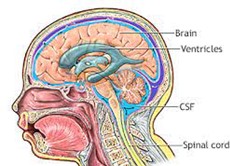RN HESI PAEDIATRICS Exam 2
RN HESI PAEDIATRICS Exam 2 ( 48 Questions)
The nurse knows that a shunt procedure is the therapy of choice in almost all cases of hydrocephalus. Which is the most common reason for revision of a child's ventriculoperitoneal shunt?
reason:
Peritonitis: While infection (such as peritonitis) is a potential complication of shunt placement, it is not the most common reason for shunt revision.
reason:
Hydrocephalus has increased: While increased hydrocephalus could potentially lead to shunt revision, it is not necessarily the most common reason. The shunt is placed precisely to manage hydrocephalus, and it's the malfunction of the shunt components that often necessitates revision.
reason:
Malfunction of the valves is the appropriate reason. Ventriculoperitoneal (VP) shunts are commonly used to treat hydrocephalus, a condition characterized by the accumulation of cerebrospinal fluid in the brain's ventricles. These shunts consist of a system of tubes and valves that help drain excess cerebrospinal fluid from the brain to another part of the body (usually the peritoneal cavity or abdomen), where it can be absorbed.
One of the most common reasons for the revision or reoperation of a child's VP shunt is the malfunction of the valves within the shunt system. These valves can become blocked, stuck, or otherwise malfunction, leading to inadequate drainage or excessive drainage of cerebrospinal fluid. Malfunction of the valves can result in over drainage (leading to low-pressure complications) or underdrainage (leading to high-pressure complications) of cerebrospinal fluid.

reason:
Child has grown since placement: Growth of the child is an important consideration when managing a VP shunt, but it is not the most common reason for shunt revision. The shunt system should ideally accommodate the child's growth, and adjustments can be made during follow-up appointments without necessarily requiring a revision.
